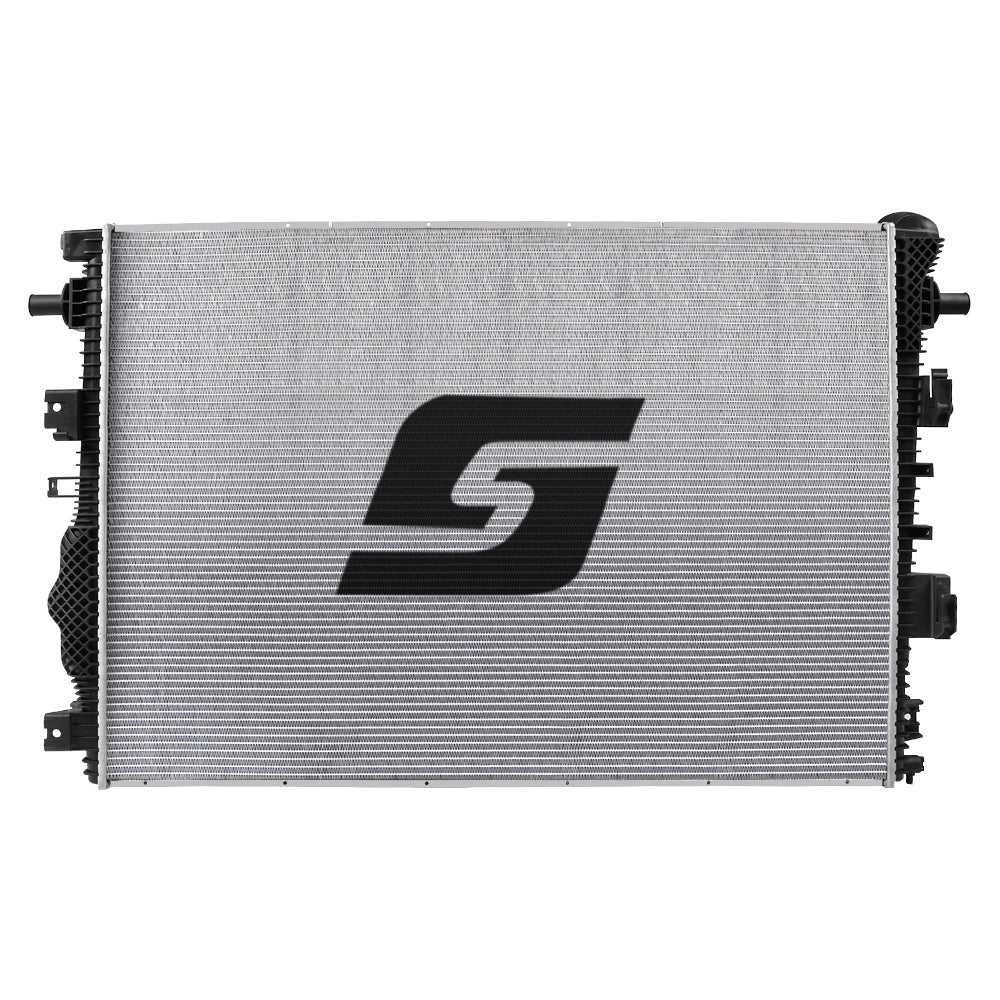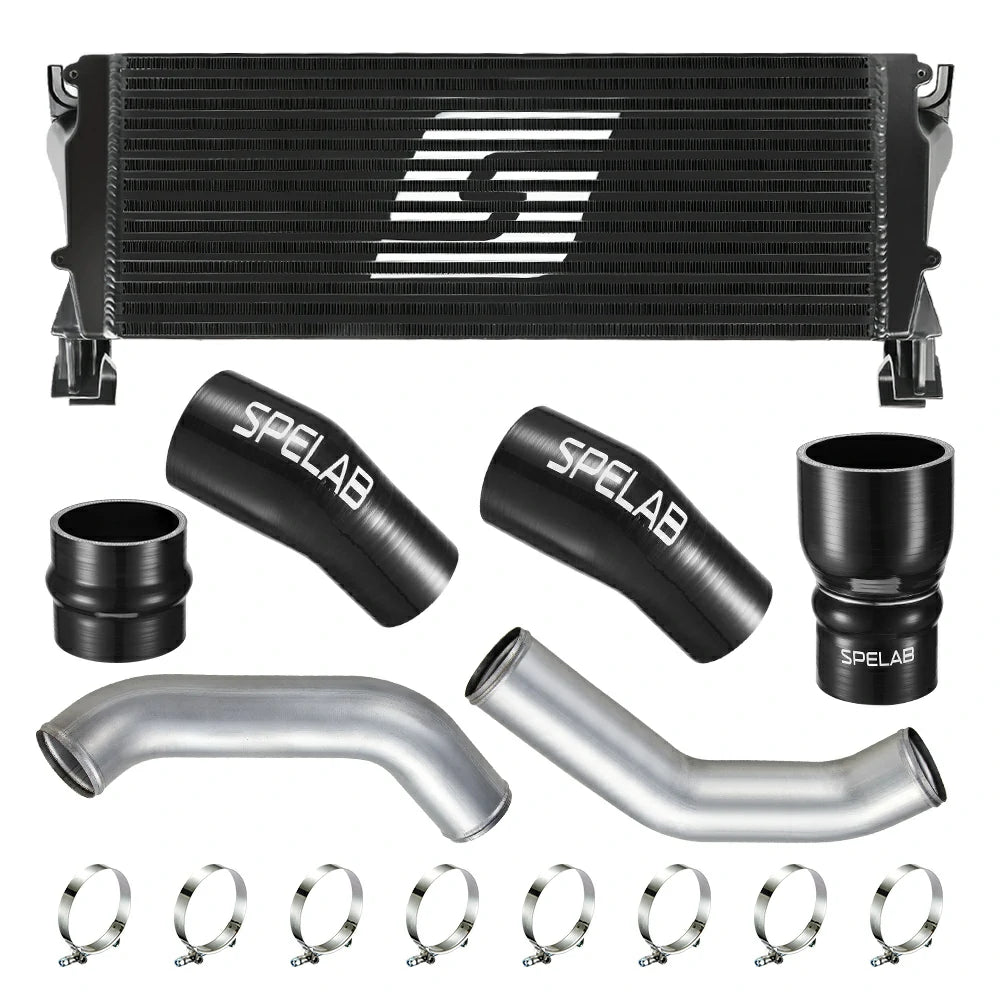Learn the essential differences, functions, and maintenance tips for intercoolers and radiators. Find out which suits your vehicle best.
Introduction
Intercoolers and radiators are crucial components in automotive cooling systems. Both play vital roles in maintaining engine efficiency and longevity. This article will delve into the key differences between intercoolers and radiators, helping you understand their unique functions and benefits.
Read on to explore the intricate workings of intercoolers and radiators!
1. What is an Intercooler?

Function of an Intercooler
An intercooler helps reduce the temperature of the air compressed by the turbocharger or supercharger before it enters the engine. By lowering the intake air temperature, intercoolers enhance engine performance and efficiency.
How Does an Intercooler Work?
Intercoolers work by transferring heat from the compressed air to the cooler ambient air. This heat exchange occurs either through air-to-air intercoolers or air-to-water intercoolers. Air-to-air intercoolers use ambient air for cooling, while air-to-water intercoolers use coolant to absorb heat.
Types of Intercoolers
There are mainly two types of intercoolers: air-to-air and air-to-water. Air-to-air intercoolers are common in high-performance vehicles, offering efficient cooling with less complexity. Air-to-water intercoolers, though more complex, provide superior cooling, especially in demanding conditions.
Keep reading to discover what radiators do and how they work!
2. What is a Radiator?

Function of a Radiator
A radiator's primary function is to cool the engine by dissipating heat from the coolant. As the coolant circulates through the engine, it absorbs heat, which the radiator then releases into the air. This process helps prevent the engine from overheating.
How Does a Radiator Work?
Radiator operate by allowing the hot coolant from the engine to flow through its core. The core is a network of thin tubes and fins that increase the surface area for heat exchange. As the coolant passes through the core, air flows over the fins, cooling the coolant before it returns to the engine.
Types of Radiators
Radiators come in various types, including copper and aluminum. Copper radiators are known for their excellent thermal conductivity, while aluminum radiators are lightweight and provide good cooling efficiency. Modern vehicles often use aluminum radiators due to their balance of performance and weight.
Continue reading to understand the main differences between intercoolers and radiators!
3. Intercooler vs. Radiator: Main Differences
Cooling Effectiveness
Intercoolers and radiators serve different cooling purposes. Intercoolers reduce the temperature of compressed air entering the engine, boosting efficiency and power. Radiators, on the other hand, cool the engine by dissipating heat from the coolant, preventing overheating.
Installation Location
Intercoolers are typically installed between the turbocharger or supercharger and the engine intake. Radiators are usually mounted at the front of the vehicle, directly behind the grille. This placement allows maximum airflow for effective cooling.
Materials and Design
Intercoolers are often made from aluminum for its lightweight and thermal conductivity. They can be air-to-air or air-to-water designs. Radiators also use aluminum but can include copper for better thermal performance. Their design features a core of thin tubes and fins to maximize heat dissipation.
Next, let's dive into a detailed product comparison between a specific radiator and intercooler kit!
4. Product Comparison: Radiator vs. Intercooler Kit
Radiator - 2017-2022 6.7L Powerstroke Ford F250 F350 F450 | SPELAB

SPELAB Radiator for 6.7L Powerstroke Diesel
2017 2018 2019 2020 2021 2022 Ford F-250 F-350 F-450
6.7 powerstroke radiator
Buy Now- High Efficiency Core: This radiator features a high-efficiency core with more fins per inch and heavy-duty tubes, maximizing cooling potential.
- Internal Reinforcements: Built using special aluminum brazing techniques, the radiator includes internally reinforced end tubes for added strength at vulnerable points.
- Gasket Design: A proprietary rubber gasket allows for expansion, contraction, and flex, addressing a common failure point in many OE designs.
- Revised End Tanks: Reinforced end tanks with added ribs and fiber reinforcement increase durability and longevity.
- Upgraded Mounting Points: Strengthened mounting points ensure secure installation and added durability.
Intercooler Kit - 2013-2018 6.7L Cummins Dodge Ram 2500/3500 | SPELAB

SPELAB Intercooler Kit for 2013-2018 6.7 Cummins Diesel Dodge
Performance Intercooler + Aluminized carbon steel Pipe
Buy Now
- Fitment Guide: Compatible with 2013-2018 Dodge Ram 2500/3500 and chassis cab models with a 6.7L Cummins engine.
- Direct-Fit Replacement: Installs in the factory location using factory components.
- Ultra-Durable Bar & Plate Core: Designed to withstand 120+ PSI, ensuring durability under high pressure.
- Aluminized Carbon Steel Pipe: Features mandrel-bent 3.5" tube diameter for increased performance and quicker turbo spool.
- Enhanced Performance: Red powder coat or raw finish options, heavy-duty silicone couplers, and clamps included for improved performance and lower exhaust gas temperatures (EGTs).
Intercooler vs. Radiator Detailed Comparison
Now, let's move on to maintenance and upkeep for both radiators and intercoolers!
5. Maintenance and Upkeep
Radiator Maintenance
Radiators require regular checks for leaks, corrosion, and debris build-up. Ensure coolant levels are adequate and replace old coolant to maintain optimal performance. Inspect hoses and connections for any signs of wear or damage.
Intercooler Maintenance
Intercoolers should be inspected for leaks and blockages. Cleaning the fins regularly ensures efficient airflow. Check the intercooler piping and connections for any damage or loose fittings to prevent air leaks and maintain performance.
Cost Analysis
Radiator maintenance generally involves more frequent checks due to its direct exposure to road debris and harsh conditions. Intercoolers, while more durable, still require periodic inspection, especially in high-performance applications. Overall maintenance costs can vary, but proactive care helps extend the lifespan of both components.
Stay with us to compare the costs and value of radiators and intercoolers!
6. Cost and Value Comparison
Market Prices
The SPELAB Cool Radiator for the 2017-2022 6.7L Powerstroke Ford F250, F350, and F450 is priced at $239.00 USD. In contrast, the SPELAB Intercooler Kit for the 2013-2018 6.7L Cummins Dodge Ram 2500/3500 is priced at $794.00 USD. These prices reflect the different functionalities and complexities of each component.
Value for Money
When evaluating value for money, consider the performance benefits and longevity of each component. The radiator, priced at $239.00 USD, is essential for preventing engine overheating, making it a critical investment for engine health. The intercooler kit, priced at $794.00 USD, enhances performance by reducing intake air temperature, providing a noticeable boost in power and efficiency, especially for turbocharged engines. Both components offer significant returns on investment by ensuring optimal engine operation and performance.
Next, let’s summarize the key points and provide some recommendations!
7. Conclusion
Intercoolers and radiators are both crucial for maintaining engine performance, but they serve different purposes. Intercoolers reduce the temperature of the intake air in turbocharged engines, enhancing performance and efficiency. Radiators, on the other hand, cool the engine coolant to prevent overheating and ensure smooth operation.
For those driving a 2017-2022 6.7L Powerstroke Ford F250, F350, or F450, the SPELAB Cool Radiator at $239.00 USD offers a robust solution for maintaining optimal engine temperature and preventing overheating. If you own a 2013-2018 6.7L Cummins Dodge Ram 2500/3500 and seek enhanced performance, the SPELAB Intercooler Kit at $794.00 USD is an excellent investment to reduce intake air temperature and boost engine efficiency.
Explore additional resources below to deepen your understanding of intercoolers and radiators!
FAQs
Q1: Do intercoolers need coolant?
A1: Not all intercoolers need coolant. Air-to-air intercoolers use ambient air for cooling, while air-to-water intercoolers use coolant to absorb heat.
Q2: Do all cars have an intercooler?
A2: No, not all cars have an intercooler. Intercoolers are primarily found in vehicles with turbocharged or supercharged engines to cool the compressed air before it enters the engine.
Q3: Why do turbocharged engines use intercoolers?
A3: Turbocharged engines use intercoolers to reduce the temperature of the compressed air, which increases air density and improves engine performance and efficiency.
Q4: Does a bigger intercooler reduce engine temperature?
A4: A bigger intercooler can reduce the intake air temperature more effectively, which can lead to improved engine performance and potentially lower overall engine temperatures.
Q5: How much HP does an intercooler add?
A5: The horsepower gain from an intercooler can vary, but it typically ranges from 5 to 20 HP, depending on the engine setup and intercooler efficiency.
Q6: How much difference does an intercooler make?
A6: An intercooler can significantly improve engine performance by reducing intake air temperature, leading to better combustion efficiency and more power.
Q7: What is the main purpose of a radiator in a vehicle?
A7: The main purpose of a radiator is to cool the engine coolant, which helps prevent the engine from overheating and ensures smooth operation.
Q8: Can a damaged radiator affect engine performance?
A8: Yes, a damaged radiator can lead to inadequate cooling, causing the engine to overheat, which can severely affect engine performance and potentially cause engine damage.
Q9: How often should a radiator be checked for maintenance?
A9: It's recommended to check the radiator for leaks, corrosion, and coolant levels every six months and to replace the coolant according to the vehicle manufacturer's guidelines.
Q10: Are aluminum radiators better than copper radiators?
A10: Aluminum radiators are often preferred for their lightweight and good cooling efficiency, while copper radiators offer excellent thermal conductivity. The choice depends on specific vehicle needs and performance requirements.







